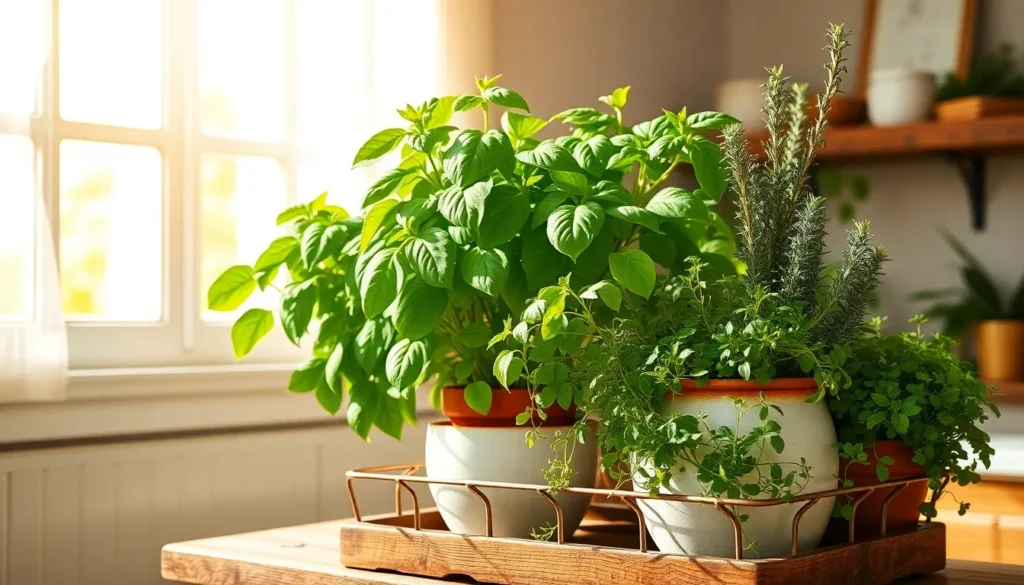The delight of plucking fresh basil from a pot on your windowsill and the invigorating scent of rosemary as you prepare dinner can transform your kitchen into a sensory haven. Growing an herb garden right in your kitchen not only enhances your culinary creations but also brings a touch of nature indoors, turning everyday meal prep into a fragrant, joyful experience. Whether you’re a green thumb or just beginning to explore the world of gardening, cultivating herbs in your kitchen is a rewarding endeavor that combines practicality with creativity.
For seasoned gardeners, adding an indoor herb garden to your repertoire can offer a new challenge and a bit of green therapy during the colder months. If you’re just starting out, this is the perfect opportunity to learn the basics of plant care in a manageable, rewarding way. You’ll discover how to select the right herbs for your space, understand the light and watering needs of each plant, and even explore fun ways to incorporate your harvest into your meals.
As we delve into this guide, we’ll walk you through every step necessary to cultivate a thriving indoor herb garden. From choosing the best containers to understanding the nuances of indoor light conditions, you’ll gain the confidence to nurture your leafy companions. By the time you reach the end of this article, you’ll be equipped with practical knowledge and inspired to bring the beauty and benefits of an herb garden into the heart of your home.
Select Suitable Herb Varieties
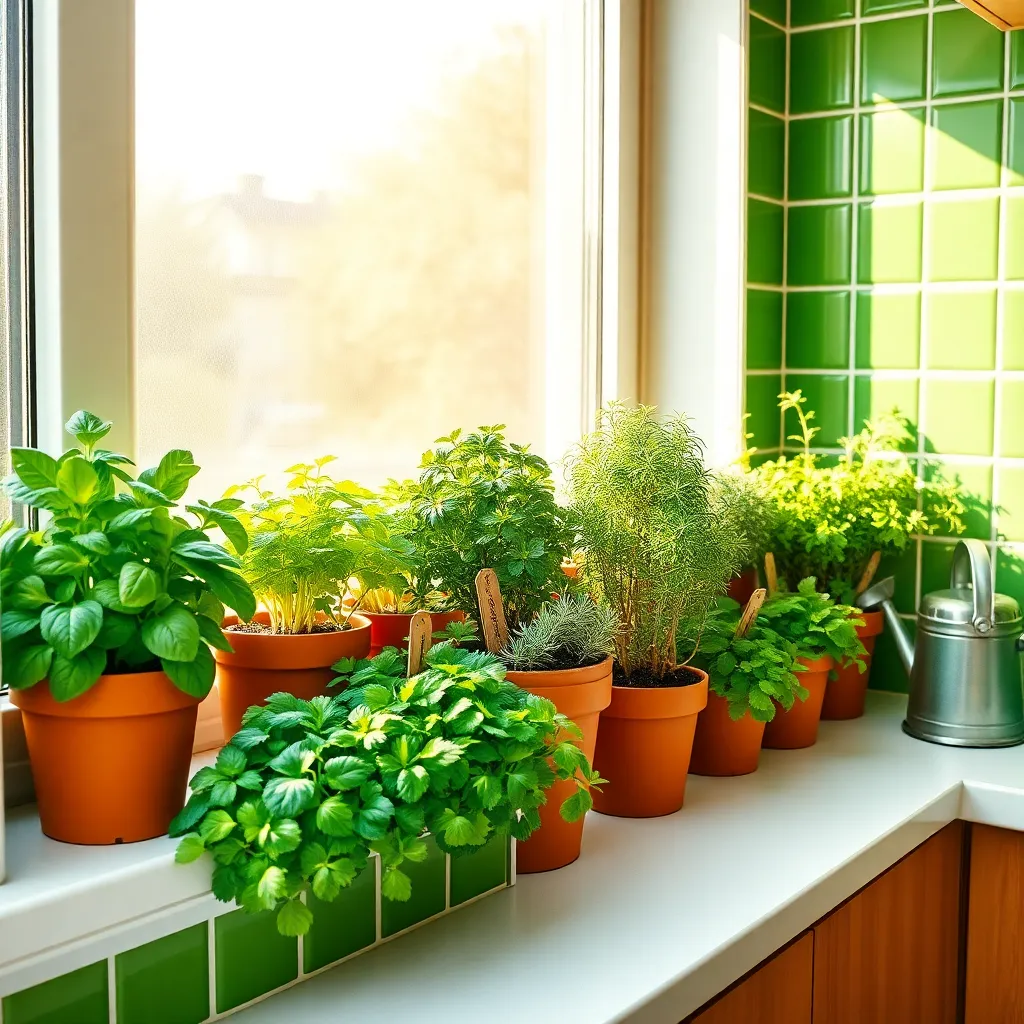
Choosing the right herbs for your kitchen garden is crucial for success. Start with easy-to-grow varieties such as basil, parsley, and mint, which thrive indoors with minimal effort.
Consider the amount of sunlight available in your kitchen when selecting herbs. Herbs like rosemary and thyme require full sun, while others like mint and parsley are more forgiving of lower light conditions.
To keep your indoor herb garden thriving, pay attention to the soil and pot selection. Use a well-draining potting mix and ensure your containers have drainage holes to prevent waterlogging.
For those ready to take on a challenge, try growing cilantro or chives, which need a bit more attention. Ensure they receive sufficient light and consistent watering to avoid bolting or wilting.
Maintaining the right watering schedule is essential for a healthy herb garden. Most herbs prefer the soil to dry out slightly between waterings, so check the top inch of soil with your finger before adding water.
Choose Appropriate Containers

When starting an herb garden in your kitchen, selecting the right containers is crucial for the success of your plants. Opt for containers with adequate drainage holes to prevent water from accumulating and causing root rot.
Size matters when it comes to container gardening, as herbs need enough space for root development. Choose containers that are at least 6-12 inches deep to accommodate the root systems of most common kitchen herbs like basil, parsley, and mint.
For beginners, using terra cotta pots is a great option because they are porous, allowing air and moisture to move freely, which is beneficial for plant health. However, be mindful that these pots may dry out faster, so regular watering is essential to maintain soil moisture.
If you’re looking to add a decorative touch, ceramic and glazed pots offer a wide range of colors and designs. These pots tend to retain moisture more effectively than terra cotta, but it’s important to monitor your watering schedule to prevent over-saturation.
Prepare Indoor Potting Mix
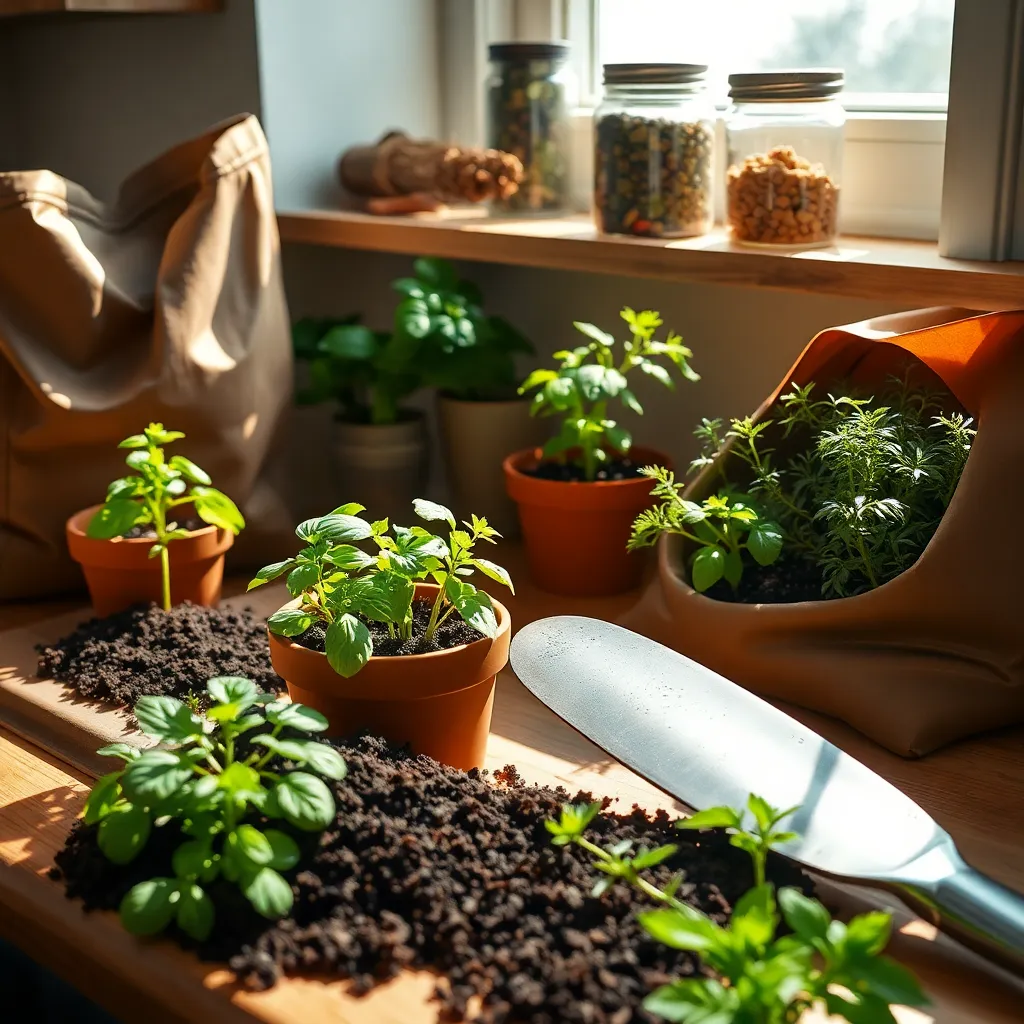
Creating the perfect indoor potting mix is crucial for your kitchen herb garden’s success. Start with a base of high-quality potting soil, which provides the essential structure and nutrients your herbs need.
To enhance drainage, incorporate some perlite or coarse sand into your mix. This step is important as it helps prevent waterlogging, which can lead to root rot.
Adding some organic material, such as coco coir or peat moss, will improve moisture retention. These ingredients also help to maintain a balanced soil pH, which is vital for healthy herb growth.
For advanced gardeners, consider adding a slow-release organic fertilizer to your mix. This will provide a steady supply of nutrients over time, reducing the need for frequent fertilization.
Position for Optimal Sunlight
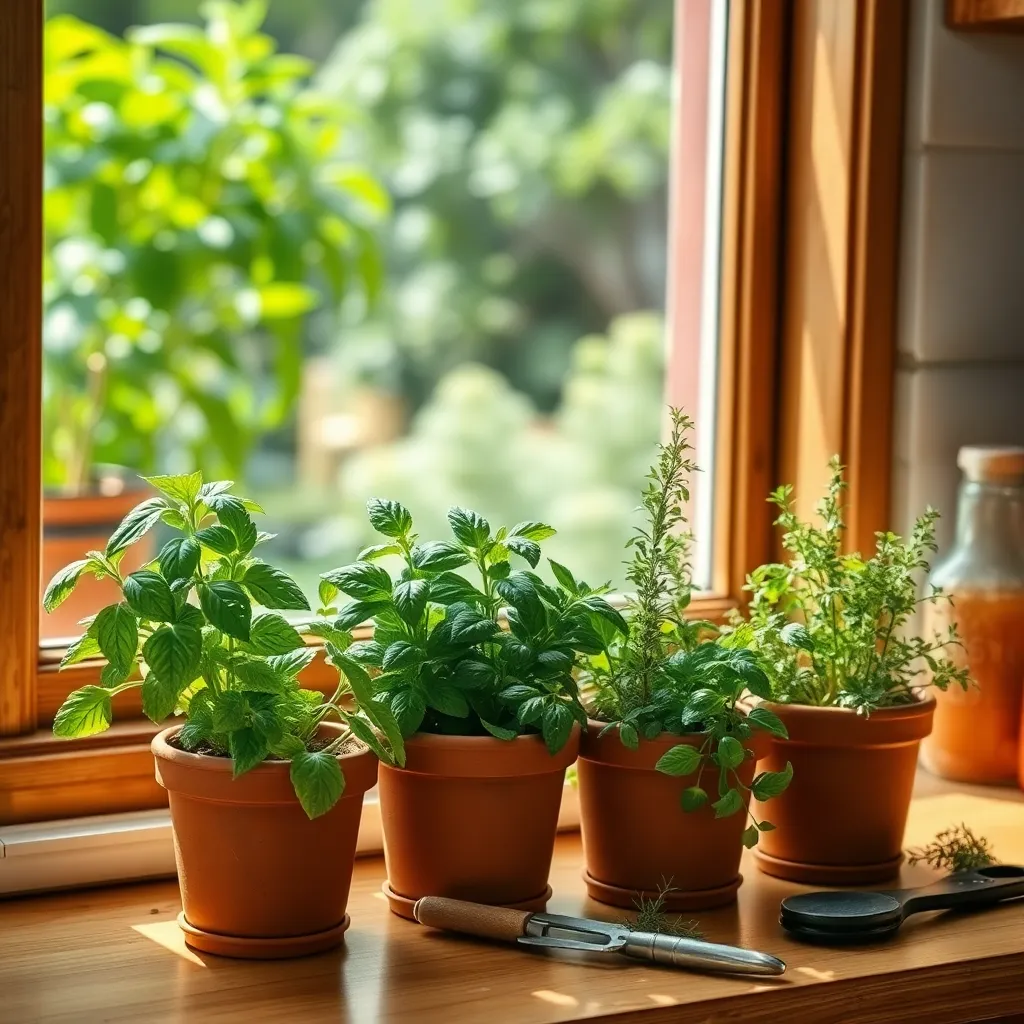
To ensure your indoor herb garden thrives, it’s crucial to position your plants where they can receive optimal sunlight. Most herbs, such as basil, thyme, and rosemary, thrive in bright, direct sunlight for at least six hours a day.
Consider placing your herb garden on a south-facing windowsill, which typically offers the best light conditions. If a south-facing window isn’t available, use a supplemental grow light to provide the necessary light intensity.
Rotate your herb pots every few days to ensure all sides receive equal sunlight exposure. This simple practice will help prevent the plants from leaning towards the light and promote even growth.
For those looking to enhance their herb garden setup, invest in a light meter to accurately measure the intensity your plants are receiving. This tool can help you make informed decisions about relocating your herbs if needed, ensuring they receive just the right amount of light.
Water and Prune Regularly
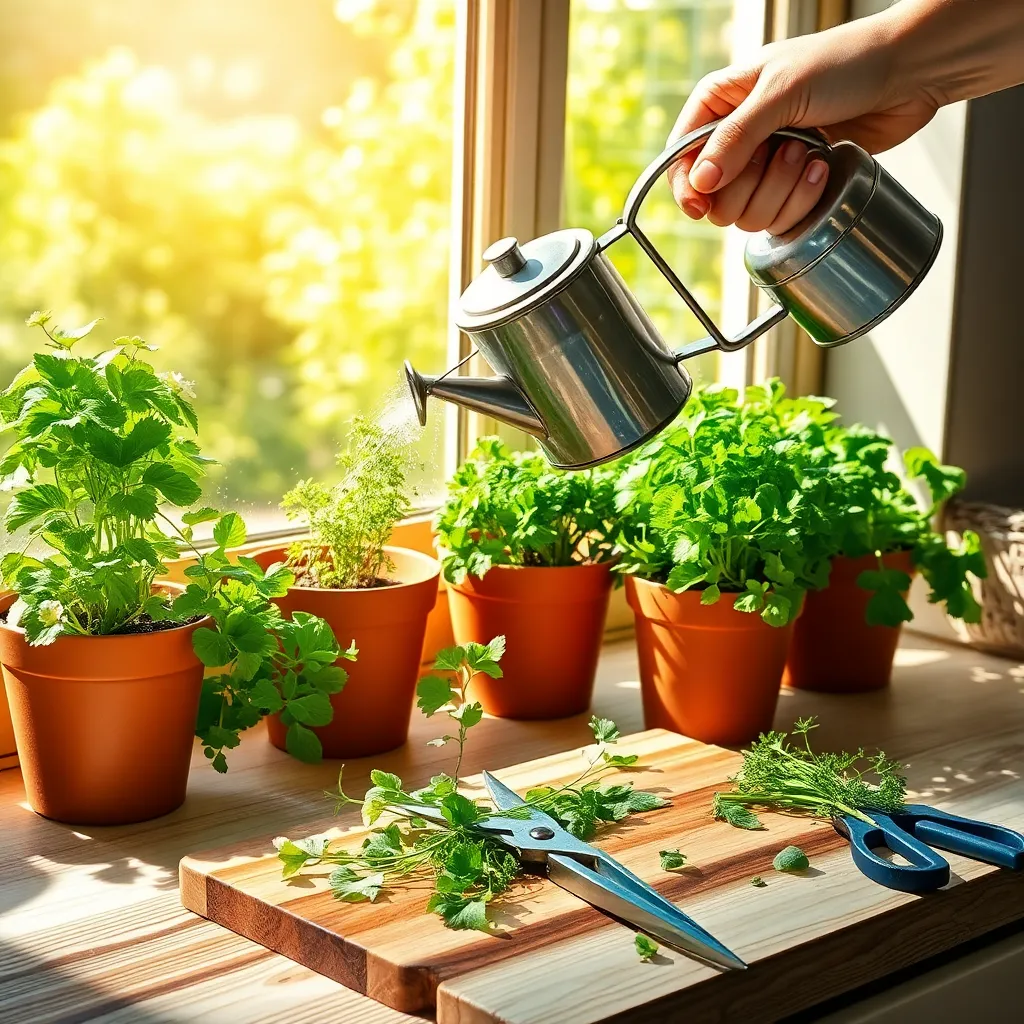
Watering your herbs properly is crucial for their growth and flavor development. It’s generally best to water your herbs in the morning, allowing any excess moisture on the leaves to evaporate, which helps prevent disease.
Check the soil moisture regularly by sticking your finger about an inch into the soil. If it feels dry at that depth, it’s time to water—ensuring the soil is consistently moist but not waterlogged is key to healthy herb growth.
Using a well-draining potting mix can prevent overwatering issues, which is common with indoor plants. A mixture of peat moss, perlite, and vermiculite often works well, providing both nutrients and drainage.
Pruning isn’t just for aesthetics; it encourages new growth and keeps your herbs productive. Regularly snipping your herbs, particularly those like basil and mint, helps them grow bushier and more robust.
Focus on cutting just above a leaf node to stimulate the plant’s growth. This technique not only prevents the plant from becoming leggy but also ensures a continuous supply of fresh herbs.
If you’re growing perennial herbs like rosemary or thyme, prune them back in early spring to maintain their shape and vigor. For these types of herbs, trimming back about one-third of the plant can encourage new, healthy growth while preventing woodiness.
Conclusion: Growing Success with These Plants
In nurturing an herb garden within your kitchen, you’ve explored five vital relationship concepts: patience, communication, growth, nurturing, and adaptability. Patience teaches us to wait for the right moments; communication, like tending to each plant’s needs, ensures that understanding flourishes. Growth represents the continuous journey of betterment, while nurturing emphasizes care and attention. Lastly, adaptability reminds us to adjust to changing circumstances for thriving bonds.
As your next step, choose one herb to plant today, symbolizing your commitment to cultivating these principles in your relationships. Whether it’s basil for love or mint for fresh beginnings, let it serve as a daily reminder to nurture your connections.
Bookmark this article now to revisit these insights whenever you need a boost in your relationship journey. A thriving garden, like a thriving relationship, requires ongoing dedication and care. By embracing these principles, you’re not just planting seeds for an herb garden but also sowing the seeds of success in your relationships. Remember, every small step you take today can lead to a flourishing future, enriching your life with love and understanding. Keep this guide close, and watch both your garden and relationships bloom beautifully.

